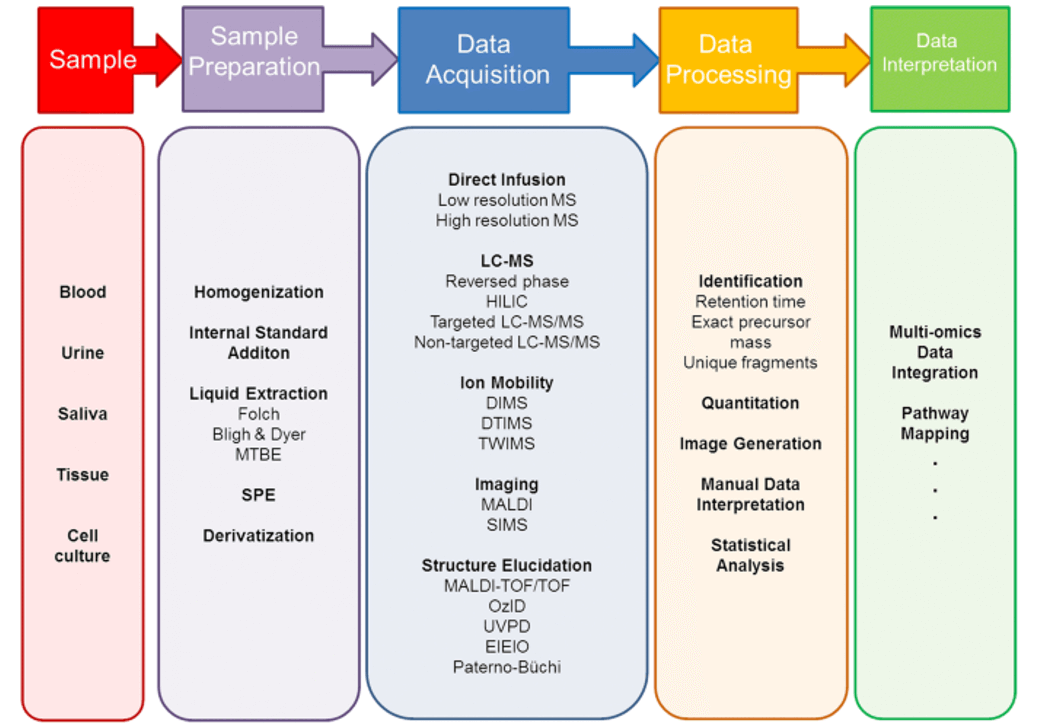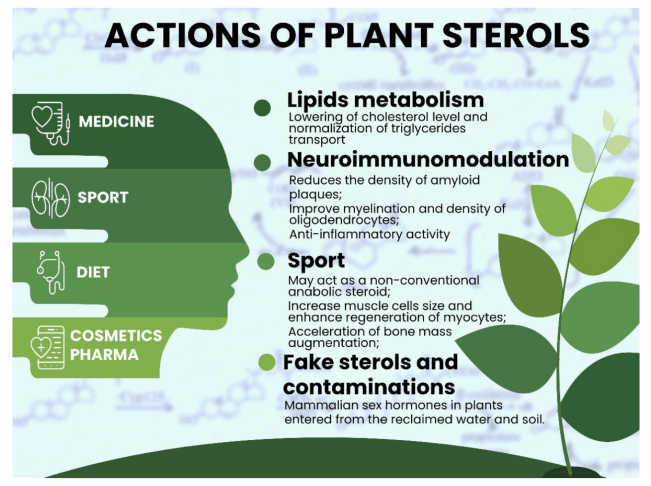Plant Seeds Lipidomics Service
Plant seeds are intricate, dynamic objects that are essential to the reproduction and growth of plants. One of the primary components of plant seeds, lipids provide vital energy and structural support for seed germination and seedling establishment. Understanding this variety is essential for figuring out the mechanisms underpinning seed formation, germination, and storage since the lipid content of seeds differs greatly between various plant species.
The study of lipidomics focuses on a thorough examination of lipid molecules and their interactions with other biological components. Lipidomics of plant seeds entails identifying, quantifying, and characterizing the lipids that are present in seed samples. Lipidomics permits the characterization of lipid species, clarification of their structural diversity, and assessment of their functional roles in seed physiology by utilizing cutting-edge analytical methods like mass spectrometry.
Plant Seeds Lipidomics Analysis Offered
Lipid Identification and Quantification: Creative Proteomics utilizes cutting-edge mass spectrometry techniques coupled with chromatographic separation to identify and quantify various lipid classes, including glycerolipids, phospholipids, sterol lipids, and sphingolipids, present in plant seeds.
Lipid Profiling and Structural Elucidation: Through comprehensive lipid profiling, Creative Proteomics enables the characterization and comparison of lipid profiles among different seed samples. Structural elucidation of lipids aids in understanding the molecular diversity and functional significance of lipid species in seed biology.
Lipidomic Data Analysis: Creative Proteomics offers advanced bioinformatics analysis for lipidomic data, facilitating the interpretation of complex datasets and providing insights into the relationships between lipid species and seed physiology.
Workflow for Targeted and Untargeted Plant Seeds Lipidomics Analysis
Sample Preparation: Seed samples are collected, processed, and extracted using appropriate methods to obtain the lipid fraction of interest.
Lipid Extraction and Purification: Lipids are extracted using organic solvents and purified to remove impurities and unwanted lipid classes that may interfere with the analysis.
Derivatization (if applicable): In some cases, derivatization techniques may be employed to enhance the detectability and stability of specific lipid classes, especially for gas chromatography-based analysis.
Lipid Fractionation (if applicable): The purified lipid extracts may undergo fractionation steps to separate lipid classes based on their polarity or other properties.
Chromatographic Separation: The lipid samples, whether purified or fractionated, are subjected to chromatographic separation using either liquid chromatography (LC) or gas chromatography (GC) systems.
- Liquid Chromatography System (e.g., Agilent 1290 Infinity LC System): High-performance liquid chromatography (HPLC) systems equipped with various columns (e.g., reversed-phase, normal phase) and specialized lipid-specific columns enable efficient separation and elution of lipid analytes.
- Gas Chromatography System (e.g., Agilent 7890B GC System): Gas chromatography systems equipped with specific columns (e.g., capillary columns) are utilized for the separation of volatile and semi-volatile lipid compounds.
Mass Spectrometry Analysis: The separated lipid fractions are then analyzed using mass spectrometry.
- For targeted lipidomics: Triple quadrupole mass spectrometers (e.g., AB SCIEX QTRAP® or Thermo Scientific TSQ series) are utilized for specific lipid quantification. The mass spectrometer is operated in multiple reaction monitoring (MRM) mode, monitoring predefined precursor and product ion transitions for the targeted lipid species.
- For untargeted lipidomics: High-resolution mass spectrometers, such as Orbitrap mass spectrometers, are employed. These instruments offer superior mass accuracy and resolving power, enabling comprehensive identification and profiling of a wide range of lipid species.
Data Acquisition and Processing: The acquired mass spectrometry data is processed and analyzed using dedicated software tools.
- For targeted lipidomics: Software platforms such as Analyst® or Xcalibur® are used for data acquisition, peak integration, and quantification of the targeted lipid species.
- For untargeted lipidomics: Specialized software tools, such as LipidSearch™ or Compound Discoverer, are employed for data processing, lipid identification, peak alignment, statistical analysis, and annotation of lipid species.
Data Analysis and Interpretation: Bioinformatics analysis is performed to interpret the lipidomic data, including statistical analysis, lipid pathway analysis, and visualization of lipid profiles.
Application of Plant Seeds Lipidomics Assay
Seed Quality Assessment: Lipidomics analysis enables the assessment of seed quality by evaluating lipid composition and profiles. Lipid species serve as indicators of seed viability, storage potential, and germination capacity. Lipidomic analysis helps identify lipid markers associated with seed vigor and quality, aiding in seed selection for crop production and conservation purposes.
Identification of Biomarkers: Plant seeds lipidomics helps identify lipid biomarkers associated with specific seed traits and processes. By comparing the lipid profiles of seeds with different characteristics, lipidomic analysis can identify specific lipid species or classes that correlate with traits such as seed dormancy, desiccation tolerance, and longevity. These biomarkers can be utilized for breeding programs, genetic improvement, and quality control of seeds.
Understanding Seed Development and Germination: Lipidomics analysis provides insights into the changes in lipid composition and metabolism during seed development and germination. By profiling the dynamic alterations in lipid species and classes, researchers can unravel the molecular mechanisms underlying seed maturation, dormancy, and the transition to active metabolism during germination. This knowledge aids in improving seed storage conditions, optimizing germination protocols, and enhancing crop productivity.
Investigating Environmental Stress Responses: Plant seeds are exposed to various environmental stresses, such as drought, salinity, and temperature fluctuations. Lipidomics analysis of seeds under stress conditions helps elucidate the lipid alterations associated with stress response mechanisms. By identifying specific lipid species or classes that change in response to environmental stress, researchers can gain insights into the adaptive responses of seeds and develop strategies for breeding stress-tolerant crop varieties.
Exploring Lipid Signaling and Significance: Lipids in plant seeds play essential roles in signaling and communication within the seed and with the surrounding environment. Lipidomics analysis provides a comprehensive view of lipid signaling molecules, such as oxylipins and lipid-derived hormones. Understanding the functions of these lipid mediators helps decipher their roles in seed development, defense mechanisms, and interactions with symbiotic organisms.
Investigating Lipid Storage and Mobilization: Plant seeds serve as energy and nutrient reserves for germination and seedling establishment. Lipidomics analysis allows for the characterization of lipid species involved in energy storage and mobilization processes. By identifying specific lipid classes and their changes during seed development and germination, researchers can elucidate the metabolic pathways involved in lipid storage and utilization, contributing to our understanding of seed physiology.
* Our services can only be used for research purposes and Not for clinical use.
Services:
Resource:
Platform:





